106 Child and the Family
The reason we turn out much like our parents, for better or worse, is that our families are such an important part of our socialization process. When we are born, our primary caregivers are almost always one or both of our parents. For several years we have more contact with them than with any other adults. Because this contact occurs in our most formative years, our parents’ interaction with us and the messages they teach us can have a profound impact throughout our lives.[1]
The sociology of the family examines the family as an institution and a unit of socialization. Sociological studies of the family look at demographic characteristics of the family members: family size, age, ethnicity and gender of its members, social class of the family, the economic level and mobility of the family, professions of its members, and the education levels of the family members.[2]
During middle childhood, children spend less time with parents and more time with peers. Parents may have to modify their approach to parenting to accommodate the child’s growing independence. Using reason and engaging in joint decision-making whenever possible may be the most effective approach (Berk, 2007).[3]
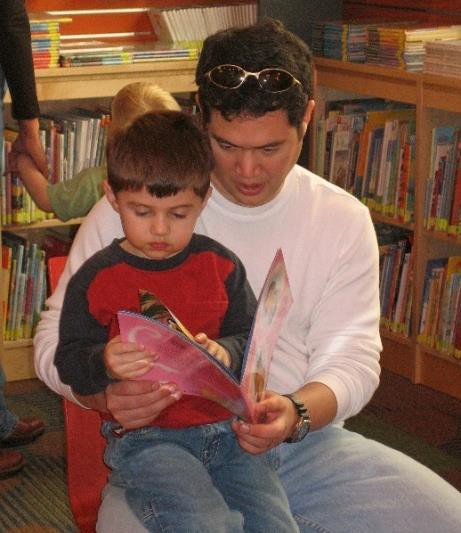
Family Atmosphere
One of the ways to assess the quality of family life is to consider the tasks of families. Berger (2005) lists five family functions:
- Providing food, clothing and shelter
- Encouraging learning
- Developing self-esteem
- Nurturing friendships with peers
- Providing harmony and stability
Notice that in addition to providing food, shelter, and clothing, families are responsible for helping the child learn, relate to others, and have a confident sense of self. The family provides a harmonious and stable environment for living. A good home environment is one in which the child’s physical, cognitive, emotional, and social needs are adequately met. Sometimes families emphasize physical needs but ignore cognitive or emotional needs. Other times, families pay close attention to physical needs and academic requirement, but may fail to nurture the child’s friendships with peers or guide the child toward developing healthy relationships. Parents might want to consider how it feels to live in the household. Is it stressful and conflict-ridden? Is it a place where family members enjoy being?[4]
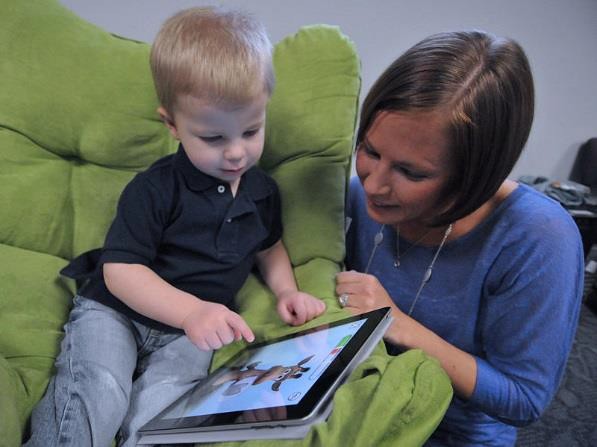
The Family Stress Model
Family relationships are significantly affected by conditions outside the home. For instance, the Family Stress Model describes how financial difficulties are associated with parents’ depressed moods, which in turn lead to marital problems and poor parenting that contributes to poorer child adjustment (Conger, Conger, & Martin, 2010). Within the home, parental marital difficulty or divorce affects more than half the children growing up today in the United States. Divorce is typically associated with economic stresses for children and parents, the renegotiation of parent-child relationships (with one parent typically as primary custodian and the other assuming a visiting relationship), and many other significant adjustments for children. Divorce is often regarded by children as a sad turning point in their lives, although for most it is not associated with long-term problems of adjustment (Emery, 1999).
In this video, Dr. Boise briefly reviews the function of the family and the Family Stress Model.
Family Forms
The sociology of the family examines the family as an institution and a unit of socialization. Sociological studies of the family look at demographic characteristics of the family members: family size, age, ethnicity and gender of its members, social class of the family, the economic level and mobility of the family, professions of its members, and the education levels of the family members.
Currently, one of the biggest issues that sociologists study are the changing roles of family members. Often, each member is restricted by the gender roles of the traditional family. These roles, such as the father as the breadwinner and the mother as the homemaker, are declining. Now, the mother is often the supplementary provider while retaining the responsibilities of child rearing. In this scenario, females’ role in the labor force is “compatible with the demands of the traditional family.” Sociology studies have examined the adaptation of males’ role to caregiver as well as provider. The gender roles are becoming increasingly interwoven and various other family forms are becoming more common.
What Families Look Like
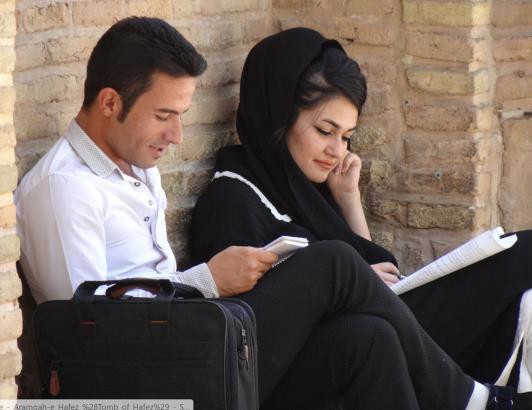 |
 |
 |
 |
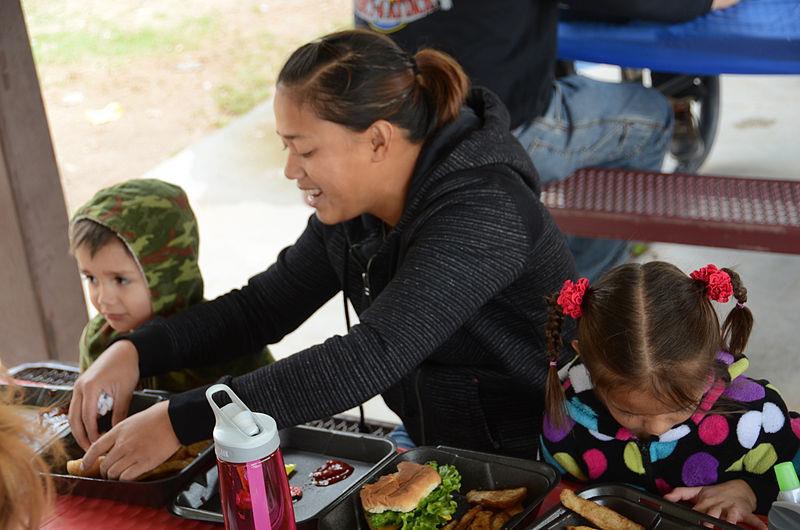 |
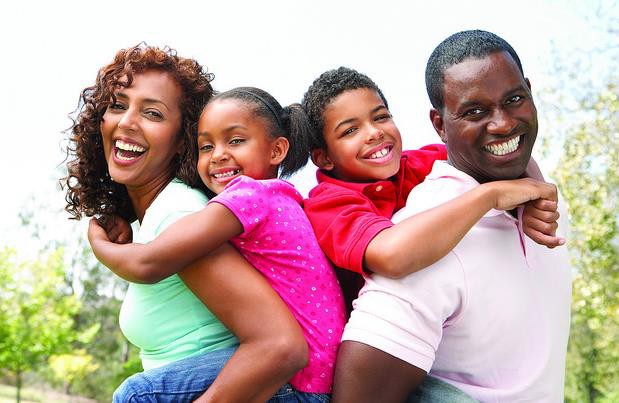 |
Throughout this textbook, you can see a variety of types of families. Here is a list of some of the diverse types of families:
Video reviews definition of family and briefly outlines different types of families.
Families Without Children
Singlehood family contains a person who is not married or in a common law relationship. They may share a relationship with a partner but lead a single lifestyle.
Couples that are childless are often overlooked in the discussion of families.
Families with One Parent
A single parent family usually refers to a parent who has most of the day-to-day responsibilities in the raising of the child or children, who are not living with a spouse or partner, or who is not married. The dominant caregiver is the parent with whom the children reside for the majority of the time; if the parents are separated or divorced, children live with their custodial parent and have visitation with their noncustodial parent. In western society in general, following a separation a child will end up with the primary caregiver, usually the mother, and a secondary caregiver, usually the father.
Single parent by choice families refer to a family that a single person builds by choice. These families can be built with the use of assisted reproductive technology and donor gametes (sperm and/or egg) or embryos, surrogacy, foster or kinship care, and adoption.
Two Parent Families
The nuclear family is often referred to as the traditional family structure. It includes two married parents and children. While common in industrialized cultures (such as the U.S.), it is not actually the most common type of family worldwide.[5]
Cohabitation is an arrangement where two people who are not married live together in an intimate relationship, particularly an emotionally and/or sexually intimate one, on a long-term or permanent basis. Today, cohabitation is a common pattern among people in the Western world. More than two-thirds of married couples in the U.S. say that they lived together before getting married.
Gay and lesbian couples with children have same-gender families. While now recognized legally in the United States, discrimination against same-gender families is not uncommon. According to the American Academy of Pediatrics, there is “ample evidence to show that children raised by same-gender parents fare as well as those raised by heterosexual parents. More than 25 years of research have documented that there is no relationship between parents’ sexual orientation and any measure of a child’s emotional, psychosocial, and behavioral adjustment. Conscientious and nurturing adults, whether they are men or women, heterosexual or homosexual, can be excellent parents. The rights, benefits, and protections of civil marriage can further strengthen these families.”[6]
Blended families describe families with mixed parents: one or both parents remarried, bringing children of the former family into the new family.6 Blended families are complex in a number of ways that can pose unique challenges to those who seek to form successful stepfamily relationships (Visher & Visher, 1985). These families are also referred to as stepfamilies.
Families That Include Additional Adults
Extended families include three generations, grandparents, parents, and children. This is the most common type of family worldwide.
Families by choice are relatively newly recognized. Popularized by the LGBTQ community to describe a family not recognized by the legal system. It may include adopted children, live-in partners, kin of each member of the household, and close friends. Increasingly family by choice is being practiced by those who see benefit to including people beyond blood relatives in their families.[7]
While most families in the U.S. are monogamous, some families have more than two married parents. These families are polygamous.[8]Polygamy is illegal in all 50 states, but it is legal in other parts of the world.[9]
Additional Forms of Families
Kinship families are those in which the full-time care, nurturing, and protection of a child is provided by relatives, members of their Tribe or clan, godparents, stepparents, or other adults who have a family relationship to a child. When children cannot be cared for by their parents, research finds benefits to kinship care.[10]
When a person assumes the parenting of another, usually a child, from that person’s biological or legal parent or parents this creates adoptive families. Legal adoption permanently transfers all rights and responsibilities and is intended to affect a permanent change in status and as such requires societal recognition, either through legal or religious sanction. Adoption can be done privately, through an agency, or through foster care and in the U.S. or from abroad. Adoptions can be closed (no contact with birth/biological families or open, with different degrees of contact with birth/biological families). Couples, both opposite and same-sex, and single parents can adopt (although not all agencies and foreign countries will work with unmarried, single, or same-sex intended parents).[11]
When parents are not of the same ethnicity, they build interracial families. Until the decision in Loving v Virginia in 1969, this was not legal in the U.S. There are other parts of the world where marrying someone outside of your race (or social class) has legal and social ramifications.[12] These families may experience issues unique to each individual family’s culture.
Sibling Relationships
Siblings spend a considerable amount of time with each other and offer a unique relationship that is not found with same-age peers or with adults. Siblings play an important role in the development of social skills. Cooperative and pretend play interactions between younger and older siblings can teach empathy, sharing, and cooperation (Pike, Coldwell, & Dunn, 2005) as well as negotiation and conflict resolution (Abuhatoum & Howe, 2013). However, the quality of sibling relationships is often mediated by the quality of the parent-child relationship and the psychological adjustment of the child (Pike et al., 2005). For instance, more negative interactions between siblings have been reported in families where parents had poor patterns of communication with their children (Brody, Stoneman, & McCoy, 1994). Children who have emotional and behavioral problems are also more likely to have negative interactions with their siblings. However, the psychological adjustment of the child can sometimes be a reflection of the parent-child relationship. Thus, when examining the quality of sibling interactions, it is often difficult to tease out the separate effect of adjustment from the effect of the parent-child relationship.
While parents want positive interactions between their children, conflicts are going to arise, and some confrontations can be the impetus for growth in children’s social and cognitive skills. The sources of conflict between siblings often depend on their respective ages. Dunn and Munn (1987) revealed that over half of all sibling conflicts in early childhood were disputes about property rights. By middle childhood this starts shifting toward control over social situations, such as what games to play, disagreements about facts or opinions, or rude behavior (Howe, Rinaldi, Jennings, & Petrakos, 2002). Researchers have also found that the strategies children use to deal with conflict change with age, but that this is also tempered by the nature of the conflict.
Abuhatoum and Howe (2013) found that coercive strategies (e.g., threats) were preferred when the dispute centered on property rights, while reasoning was more likely to be used by older siblings and in disputes regarding control over the social situation. However, younger siblings also use reasoning, frequently bringing up the concern of legitimacy (e.g., “You’re not the boss”) when in conflict with an older sibling. This is a very common strategy used by younger siblings and is possibly an adaptive strategy in order for younger siblings to assert their autonomy (Abuhatoum & Howe, 2013). A number of researchers have found that children who can use non-coercive strategies are more likely to have a successful resolution, whereby a compromise is reached and neither child feels slighted (Ram & Ross, 2008; Abuhatoum & Howe, 2013).
Not surprisingly, friendly relationships with siblings often lead to more positive interactions with peers. The reverse is also true. A child can also learn to get along with a sibling, with, as the song says “a little help from my friends” (Kramer & Gottman, 1992).[13]
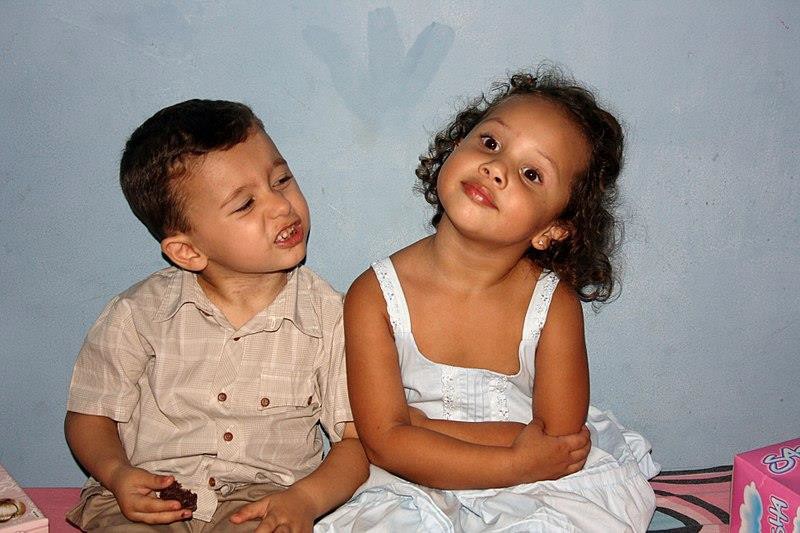
Video reviews research findings on sibling relationships. Please note: The first part of the video is a retelling of the story of Cain and Abel. The video intentionally begins part way through when they start talking about research on sibling relationships.
Changes in Families – Divorce
The tasks of families listed above are functions that can be fulfilled in a variety of family types— not just intact, two-parent households. Harmony and stability can be achieved in many family forms and when it is disrupted, either through divorce, or efforts to blend families, or any other circumstances, the child suffers (Hetherington & Kelly, 2002). Changes continue to happen, but for children they are especially vulnerable. Divorce and how it impacts children depends on how the caregivers handle the divorce as well as how they support the emotional needs of the child.
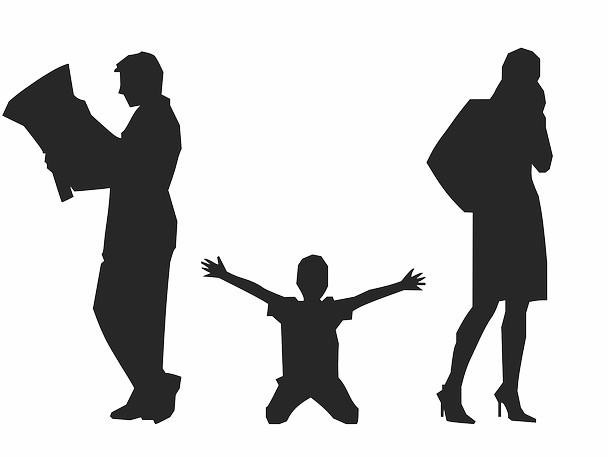
Divorce
A lot of attention has been given to the impact of divorce on the life of children. The assumption has been that divorce has a strong, negative impact on the child and that single-parent families are deficient in some way. However, 75-80 percent of children and adults who experience divorce suffer no long-term effects (Hetherington & Kelly, 2002). An objective view of divorce, repartnering, and remarriage indicates that divorce, remarriage and life in stepfamilies can have a variety of effects.
Factors Affecting the Impact of Divorce
As you look at the consequences (both pro and con) of divorce and remarriage on children, keep these family functions in mind. Some negative consequences are a result of financial hardship rather than divorce per se (Drexler, 2005). Some positive consequences reflect improvements in meeting these functions. For instance, we have learned that a positive self- esteem comes in part from a belief in the self and one’s abilities rather than merely being complimented by others. In single-parent homes, children may be given more opportunity to discover their own abilities and gain independence that fosters self-esteem. If divorce leads to fighting between the parents and the child is included in these arguments, their self-esteem may suffer.
The impact of divorce on children depends on a number of factors. The degree of conflict prior to the divorce plays a role. If the divorce means a reduction in tensions, the child may feel relief. If the parents have kept their conflicts hidden, the announcement of a divorce can come as a shock and be met with enormous resentment. Another factor that has a great impact on the child concerns financial hardships they may suffer, especially if financial support is inadequate. Another difficult situation for children of divorce is the position they are put into if the parents continue to argue and fight—especially if they bring the children into those arguments.
Short-term consequences: In roughly the first year following divorce, children may exhibit some of these short-term effects:
- Grief over losses suffered. The child will grieve the loss of the parent they no longer see as frequently. The child may also grieve about other family members that are no longer available. Grief sometimes comes in the form of sadness but it can also be experienced as anger or withdrawal. Older children may feel depressed.
- Reduced Standard of Living. Very often, divorce means a change in the amount of money coming into the household. Children experience new constraints on spending or entertainment. School-aged children, especially, may notice that they can no longer have toys, clothing or other items to which they’ve grown accustomed. Or it may mean that there is less eating out or being able to afford cable television, and so on. The custodial parent may experience stress at not being able to rely on child support payments or having the same level of income as before. This can affect decisions regarding healthcare, vacations, rents, mortgages and other expenditures. And the stress can result in less happiness and relaxation in the home. The parent who has to take on more work may also be less available to the children.
- Adjusting to Transitions. Children may also have to adjust to other changes accompanying a divorce. The divorce might mean moving to a new home and changing schools or friends. It might mean leaving a neighborhood that has meant a lot to them as well.
Long-Term consequences: Here are some effects that go beyond just the first year following divorce.
- Economic/Occupational Status. One of the most commonly cited long-term effects of divorce is that children of divorce may have lower levels of education or occupational status. This may be a consequence of lower income and resources for funding education rather than to divorce per se. In those households where economic hardship does not occur, there may be no impact on economic status (Drexler, 2005).
- Improved Relationships with the Custodial Parent (usually the mother): Most children of divorce lead happy, well-adjusted lives and develop stronger, positive relationships with their custodial parent (Seccombe and Warner, 2004). Others have also found that relationships between mothers and children become closer and stronger (Guttman, 1993) and suggest that greater equality and less rigid parenting is beneficial after divorce (Steward, Copeland, Chester, Malley, and Barenbaum, 1997).
- Greater emotional independence in sons. Drexler (2005) notes that sons who are raised by mothers only develop an emotional sensitivity to others that is beneficial in relationships.
- Feeling more anxious in their own love relationships. Children of divorce may feel more anxious about their own relationships as adults. This may reflect a fear of divorce if things go wrong, or it may be a result of setting higher expectations for their own relationships.
- Adjustment of the custodial parent. Furstenberg and Cherlin (1991) believe that the primary factor influencing the way that children adjust to divorce is the way the custodial parent adjusts to the divorce. If that parent is adjusting well, the children will benefit. This may explain a good deal of the variation we find in children of divorce.[14]
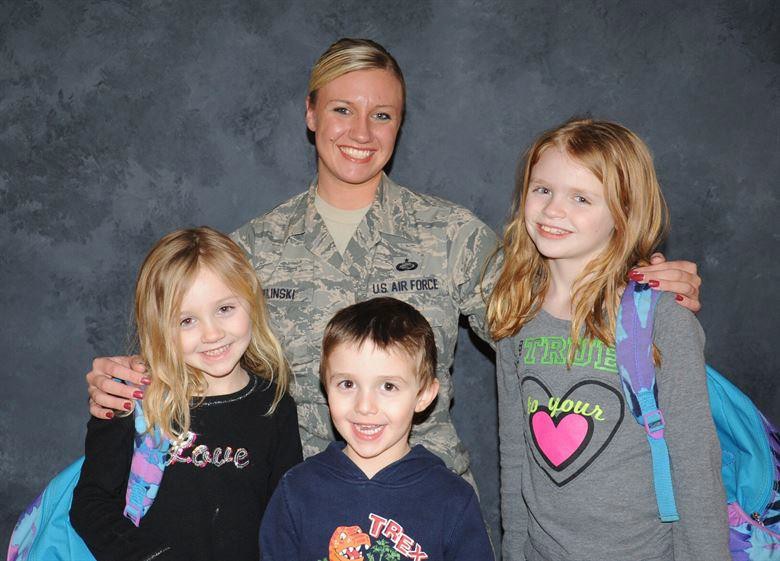
Families are the most important part of the 6 to 11-year-old life. However, peers and friendships become more and more important to the child in middle childhood.
- Sociology: Brief Edition is licensed under CC BY-NC-SA 3.0 ↵
- Children’s Development by Ana R. Leon is licensed under CC BY 4.0 ↵
- Sociology: Brief Edition is licensed under CC BY-NC-SA 3.0 ↵
- Lifespan Development: A Psychological Perspective by Martha Lally and Suzanne Valentine-French is licensed under CC BY-NC-SA 3.0 ↵
- Types of Families by Lumen references Cultural Anthropology/Social Institutions/Family by WikiEducator, which is licensed under CC0 ↵
- Same-sex marriage by Wikipedia is licensed under CC BY-SA 3.0 ↵
- Types of Families by Lumen references Cultural Anthropology/Social Institutions/Family by WikiEducator, which is licensed under CC0 ↵
- Family by Wikipedia is licensed under CC BY SA 3.0 ↵
- Legality of polygamy by Wikipedia is licensed under CC BY-SA 3.0 ↵
- About Kinship Care by the Child Welfare Information Gateway is in the public domain ↵
- Adoption by Wikipedia is licensed under CC BY-SA 3.0 ↵
- Interracial marriage by Wikipedia is licensed under CC BY-SA 3.0 ↵
- Lifespan Development: A Psychological Perspective by Martha Lally and Suzanne Valentine-French is licensed under CC BY-NC-SA 3.0 ↵
- Lifespan Development - Module 6: Middle Childhood by Lumen Learning references Psyc 200 Lifespan Psychology by Laura Overstreet, licensed under CC BY 4.0 (Edits made to content from these sources by Courtney Boise) ↵

